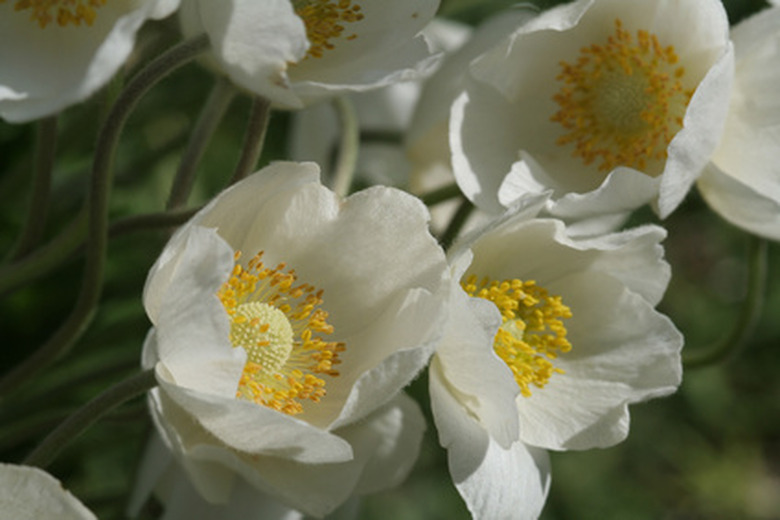Flowers That Look Like Poppies
True poppies, whether perennial or annual, are highly ornamental and surprisingly tough garden performers, says Kim Hilgers, an instructor of horticulture at South Dakota State University. In late spring and early summer, lacy-leaved poppies' nodding stems have bright, tissue-textured showy-centered flowers. Many other plants, however, have similar blooms. Use them to for an extended season of poppy-like flowers in your garden.
Windflower
Windflower (Anemone coronaria) is a tuberous perennial native to the Mediterranean. Standing from 9 to 18 inches high and 6 to 9 inches wide, this April to June bloomer has green basal leaves, each divided into nine leaflets. Each of its 10- to-12-inch-high stems produces one showy, poppy-like bloom up to 2.5 inches across. Flowers may be red, blue or white. Hardy to 0 degrees Fahrenheit, windflower becomes dormant after blooming. Use this largely pest- and disease- resistant plant, suggests the Missouri Botanical Garden, in rock gardens and borders. Plant the tubers in autumn in full sun to partial shade and fertile, well-drained sandy soil. Provide winter mulch.
- True poppies, whether perennial or annual, are highly ornamental and surprisingly tough garden performers, says Kim Hilgers, an instructor of horticulture at South Dakota State University.
- Standing from 9 to 18 inches high and 6 to 9 inches wide, this April to June bloomer has green basal leaves, each divided into nine leaflets.
Satin Flower
Satin flower (Clarkia amoena), an annual native to Northwestern California's coastal bluffs, grows 2 feet to 30 inches high. Happiest in cool weather, it produces poppy-like, 2- to 3-inch flowers in June and July. They may be pink, red or lavender. Their papery petals frequently have blotched bases. Plants have lance-shaped, green leaves. Satin flower is susceptible to several diseases and insects, including powdery mildew, stem rot and aphids. Plant this annual in full sun—with afternoon shade where summers are hot—advises the Missouri Botanical Garden. Attractive in containers and borders, it makes a good cut flower. Provide adequate air circulation to decrease its risk of disease. In the best environments, satin flower may self-sow.
- Satin flower (Clarkia amoena), an annual native to Northwestern California's coastal bluffs, grows 2 feet to 30 inches high.
- Happiest in cool weather, it produces poppy-like, 2- to 3-inch flowers in June and July.
Prairie Poppy Mallow
Prairie poppy mallow (Callirhoe alcaeoides) is a low—6 inches to 1 foot—mat-forming perennial of prairies and roadsides across the Midwestern and Southern United States. An attractive ground cover, it has trailing stems with lobed foliage. Stiff hairs cover the leaves. Between June and August, it blooms profusely with 2.5-inch, cup-shaped blooms similar to poppy flowers. They may be white, pink or lavender. The 'Logan Calhoun' variety has white flowers. Surviving winter temperatures to minus 30 degrees F, 'Logan Calhoun' may suffer crown rot in wet soil. Use the plant along border fronts, as an edging or to cascade over walls, recommends the Missouri Botanical Garden. Plant it in full sun and averagely moist, well-drained soil.
- Prairie poppy mallow (Callirhoe alcaeoides) is a low—6 inches to 1 foot—mat-forming perennial of prairies and roadsides across the Midwestern and Southern United States.
- Between June and August, it blooms profusely with 2.5-inch, cup-shaped blooms similar to poppy flowers.
